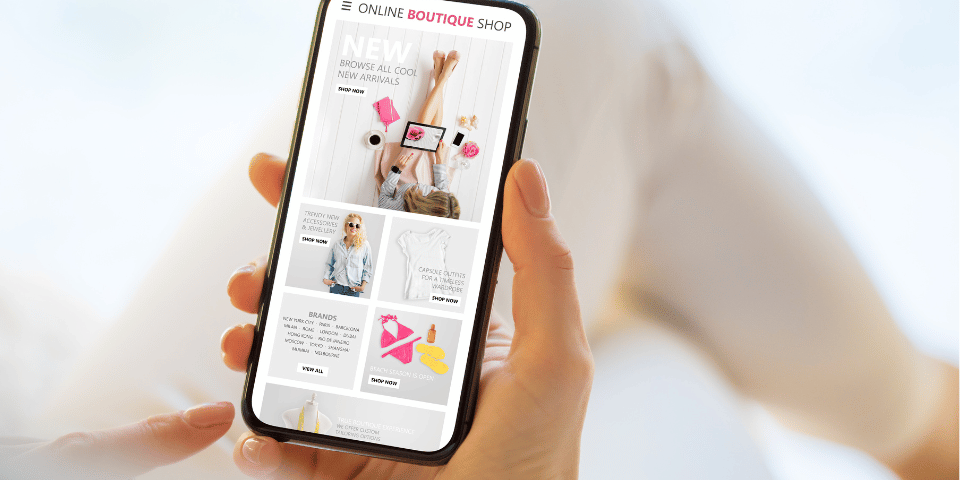The Financial Pitfall: Impulse Spending and How to Dodge It
October 26, 2023

When was the last time you made an impulse purchase? Maybe you were scrolling on your phone when an email notification popped up for an amazing “super sale” at your favorite clothing store.
Next thing you know, you’re adding $100 in merchandise to your cart in order to get a coupon off your next purchase. If this resonates with you, you’re not alone. According to a 2022 survey on impulse spending by Statisa consumers in the United States spent an average of over $300 each month on impulse purchases.
In a world filled with endless shopping options at your fingertips, it's easier than ever to fall victim to impulse spending. With the allure of e-commerce giants like Amazon, and the constant bombardment of ads on social media, it's vital to understand the consequences of impulse spending and the steps to avoid it. This blog post will help you recognize the dangers of impulse purchases and provide valuable insights on how to steer clear of this financial pitfall.
Understanding Impulse Spending
What is impulse spending? Impulse spending refers to making unplanned purchases without careful consideration of your budget or financial goals. It often involves buying items that you don't truly need, driven by immediate desires or external influences. This type of spending can quickly lead to financial instability and debt if left unchecked.
Here's a closer look at what impulse spending can look like:
- Emotional Triggers: Emotions can be powerful drivers of impulse purchases. Feeling stressed, anxious, or even overly joyful can lead to shopping to alleviate or enhance these feelings. It's easy to indulge in retail therapy, even if it's just a temporary fix.
- Limited Time Offers: Sales and discounts can be tempting, and they often lead people to make purchases without careful consideration. Sales often make us feel pressured to make a purchase quickly so we don’t lose out on discounts. No one wants to pay full price, but oftentimes we’re using these deals to make purchases we probably wouldn’t have made otherwise. And while savings are great, impulse spending under the guise of a "good deal" can potentially lead to unchecked credit card debt or a depleted savings account.
- Peer Pressure: Social situations can lead to impulsive buying. Whether it's Keeping Up With The Joneses or buying things to keep up with trends in home design, fashion, or beauty, peer pressure is a common trigger for impulse spending. We see this a lot in a world filled with social media influencers.
- One-Click Shopping: The ease of online shopping platforms like Amazon has made it incredibly convenient to buy with a single click. The lack of physical barriers, such as waiting in line at a store, can result in more impulse purchases. If you had to drive to the store, would you still be purchasing that item?
- Ads and Social Media: The constant barrage of advertisements on social media and other online platforms can make it difficult to resist the temptation to shop. With Americans spending an average of 2.5 hours per day on social media platforms, it makes it easy for ads to be carefully curated based on your views, likes, and clicks, making them even more appealing and personalized to your interests.
The Dangers of Impulse Spending
Now that you understand what impulse spending is, it’s time to look at the unintended consequences. Understanding the perils of impulse spending is crucial in taking control of your financial well-being. Here are some of the risks associated with this habit.
- Debt Accumulation: Impulse spending can lead to an increase in credit card debt, making it challenging to pay off balances and potentially incurring high-interest charges.
- Reduced Savings: Money spent on impulsive purchases could have been allocated to savings or investments, impacting your long-term financial goals, such as home ownership, savings for college or retirement.
- Financial Stress: The burden of managing debt and struggling to make ends meet can cause significant stress and anxiety, affecting your overall well-being.
- Missed Opportunities: Money spent impulsively today could have been invested in opportunities that may yield substantial returns in the future.
- Loss of Financial Control: Constant impulse spending can make you feel like your finances are spiraling out of control, making it difficult to achieve financial stability.
Ten Ways to Avoiding Impulse Spending
Now that we've covered the dangers of impulse spending let's explore practical strategies to avoid falling into this financial trap:
- Create a Budget: Establishing a clear budget is the foundation of sound financial management. Set limits for different spending categories, including entertainment and discretionary items, and stick to them. Education First offers a free budgeting tool, iThrive, to help members set their budget and stick to it. The software aggregates the data from checking account transactions and classifies them according to categories created by the user. It also incorporates machine learning so that after you have identified a particular merchant as a category, it will associate all future purchases to the same bucket, eliminating the burden of having to categorize future transactions.
- Define Your Financial Goals: Having clear financial objectives, such as saving for a vacation, paying off debt, or investing in your future can provide motivation to avoid impulse spending. If impulse spending is getting in the way of saving for your goals, consider opening a club savings account where you can set aside money each month into a savings account where funds are only dispersed once a year.
- Prioritize Needs Over Wants: Distinguish between essential needs and discretionary wants. Focus on fulfilling your needs first before indulging in wants, and try to allocate a portion of your income to savings. Not sure you can control yourself? Education First FCU’s card management tool allows you to set activity alerts and set spending and transaction type limits on both your credit or debit cards to help steer you in the right direction.
- Practice the 24-Hour Rule: Before making any non-essential purchase, wait at least 24 hours. This delay allows you to reconsider whether the item is truly necessary and if it aligns with your financial goals. Statistically speaking, most people do not follow through with the purchase once they have waited 24 hours because the impulsivity has passed.
- Avoid Retail Therapy: The term retail therapy refers to the practice of shopping when you are feeling down. While clinical therapy requires time, resources and possibly money, the act of shopping is quick and causes a temporary boost in dopamine, the chemical in your body that makes you feel happy. So, it should come as no surprise that when you are feeling down, you are more likely to make an impulse purchase. The good news is that you don't have to buy happiness. Exercise and meditation are also effective alternatives for boosting your mood or managing anxiety, and they don't come with buyer's remorse, which is something many people experience when they purchase something that they can't afford.
- Unsubscribe and Block Ads: Take control of your online environment by unsubscribing from promotional emails and disable ad targeting to limit exposure to online ads. This reduces the temptation to make impulse purchases. Another solution is to clean out your inbox. Just like you set aside time to clean your home, set aside time to do the same for your email. Unsubscribing from retailers to remove the constant temptation.
- Plan Your Shopping Trips: When you need to shop, create a list and stick to it. Avoid shopping while hungry, tired, or stressed, as these factors can lead to impulsive decisions.
- Pay with Cash or Debit: Using cash or a debit card for purchases forces you to spend only the money that you have versus borrowing on credit and incurring debt for purchases made that you may not have the money to repay.
- Consider the Lost Opportunity: Before making an impulse purchase, think about what you could do with the money instead, such as investing, saving for a vacation, or paying off debt. What if instead of impulse spending $300 every month on impulse purchases, you invest that money in a high-yield share certificate (also known as a certificate of deposit, or a CD). Instead of spending that money on something you probably don’t need, you’ll be rewarded handsomely at the end of the term.
- Review Your Finances Regularly: Keep a close eye on your financial statements, credit card bills, and bank accounts to monitor your spending habits and make adjustments as needed. One of the biggest reasons people overspend is that they don’t have a budget where they track what they spend and where.
Impulse spending is a proven financial pitfall that can undermine both your short and long-term financial well-being, which is why it is important to educate yourself on your spending habits and use tools that help you to be vigilant and disciplined when it comes to managing your money. By understanding the dangers of impulse spending and implementing the strategies we've outlined, you can take control of your finances and work towards your financial goals.
Education First Federal Credit Union is here to support you on your journey to financial stability. If information like this is helpful, subscribe to our blog, The Vault. Additionally, you can download our financial literacy app, Zogo, where you can access bite-sized lessons in a gamified environment that rewards your progress with gift cards. There you will find a wide variety of topics to help you save, spend, and manage your money with intention.




